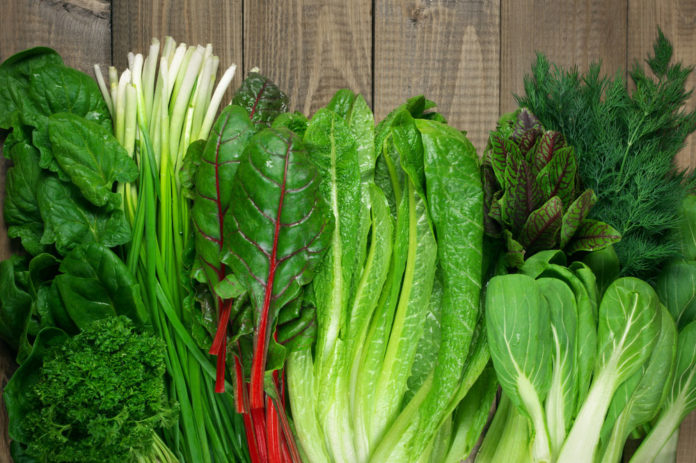“Eat your greens!” is an all too familiar statement when trying to lose weight or optimize health. And though vegetables often get the infamous eye roll or shrug of the shoulders (notoriously during childhood), their intake is extremely valuable. Fill in those nutritional holes with these 15 green vegetables that are great for your health!
15 Green Vegetables
1. Artichokes
Do not let their tough exterior turn you away, artichoke leaves and hearts are loaded with nutrients! And take it to “heart,” as being a good source of fiber, vitamin K, antioxidants, and folate, artichokes can play a beneficial role in heart health along with fighting against other chronic diseases.
2. Asparagus
Despite its variations in sizes and colors (mostly green in the U.S.), asparagus bares an ample supply of nutrients, including vitamins A, C, E, K along with folate, iron, and copper. And if desiring more than steamed asparagus as a side dish, take a bite out of these 25 amazing asparagus recipes!
3. Broccoli
The mini tree lookalikes are much more than that dreaded vegetable on your childhood dinner plate. This green vegetable is an excellent source of vitamins A, C, E, and K and even provides protein and calcium. Shake up your next head of broccoli with family-friendly recipes, even children cannot resist!
4. Brussels Sprouts
Brussels sprouts are an excellent source of vitamin C and K while supplying a good amount of fiber, folate, and potassium. They also contain a sulfur-containing compound, known as sulforaphane, giving the green vegetable its bitter taste. But beyond its contribution to flavor, sulforaphane may fight against multiple types of cancer – melanoma, esophageal, prostate, and pancreatic.
5. Cabbage
Tired of dull shredded lettuce in your everyday salad? Swap it out with cabbage! Utilizing cabbage offers vibrancy to food products along with added crunch. Mix cabbage into salad, atop of sandwiches, in fish tacos, or prepare one of these unique, healthified slaw recipes.
6. Collard Greens
Apart of the same family as cabbage, collard greens are a large, green leafy vegetable. Though often paired with other greens in cooking (such as kale and spinach), they provide nutrients on their own, boasting in fiber, folate, calcium, and vitamins A, C, and K. Enjoy them steamed, boiled, braised, sautéed, or in these recipes.
7. Green Beans
Despite its name, green beans are not actually classified under the “beans and peas” category in the Dietary Guidelines for Americans. In fact, they are counted as subgroup under “vegetables.” But like mature beans, they offer not only key nutrients, but act as a plant-based protein.
8. Green Bell Peppers
Though individuals perceive all peppers to deliver heat and spice, green bell peppers actually offer a mildly sweet flavor, allowing them to be quite versatile in recipes. Like the red, orange, and yellow forms, green peppers offer high amounts of fiber along with vitamins C and E.
9. Jalapenos
Unlike green bell peppers, jalapenos offer heat! Related to its capsaicin content, the spiciness of jalapenos can vary. In general, though, jalapenos taking on a red color provide the most heat. In addition to providing heat, capsaicin may play a role in weight loss by accelerating metabolism!
10. Kale
Food trends come and go, but kale prevails to stay! Kale rose in popularity not terribly long ago associated with its “superfood” suggestion. But unlike most food claims, kale lives up to its name and offers powerful antioxidants and nutrients that have association to good heart, brain, and digestive health.
11. Kohlrabi
This uniquely appearing annual vegetable may not be as utilized as others, but it still deserves attention! Kohlrabi delivers a texture similar to cabbage and broccoli stems and can be enjoyed both cooked or in its raw form. Learn how to cook and prepare that mysterious green vegetable here.
12. Leeks
A member of the onion family, leeks offer a mild, onion-like taste. And with one cup of leeks offering only a small number of calories (approximately 54), this green vegetable supplies bulk to dishes while keeping you full for longer time periods and lessening the risk of overeating. Find your how-to guide on cleaning and slicing leeks here.
13. Mustard Greens
This leafy, green vegetable is an excellent source of vitamin K, a critical nutrient necessary for blood clotting along with supporting bone health. Mustard greens also offer vitamins C and E that act as powerful antioxidants. Its suggested to sauté mustard greens over boiling them to best retain their flavor.
14. Snap Peas
Also known as sugar snap peas, this edible-podded green vegetable offers protein, fiber, and natural sugars. The well-balanced nutritional composition makes snap peas excellent sweet and crunchy snack and can be further transformed into these recipe variations!
15. Swiss Chard
Swiss chard is a powerful leafy, green vegetable. In fact, it supplies over 700 percent of daily vitamin K needs! Further suggested benefits of Swiss chard include cancer prevention, immune support, and digestive improvement. If not accustomed to its use, try out this easy Swiss chard recipe!






